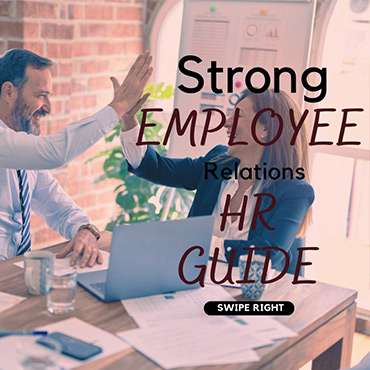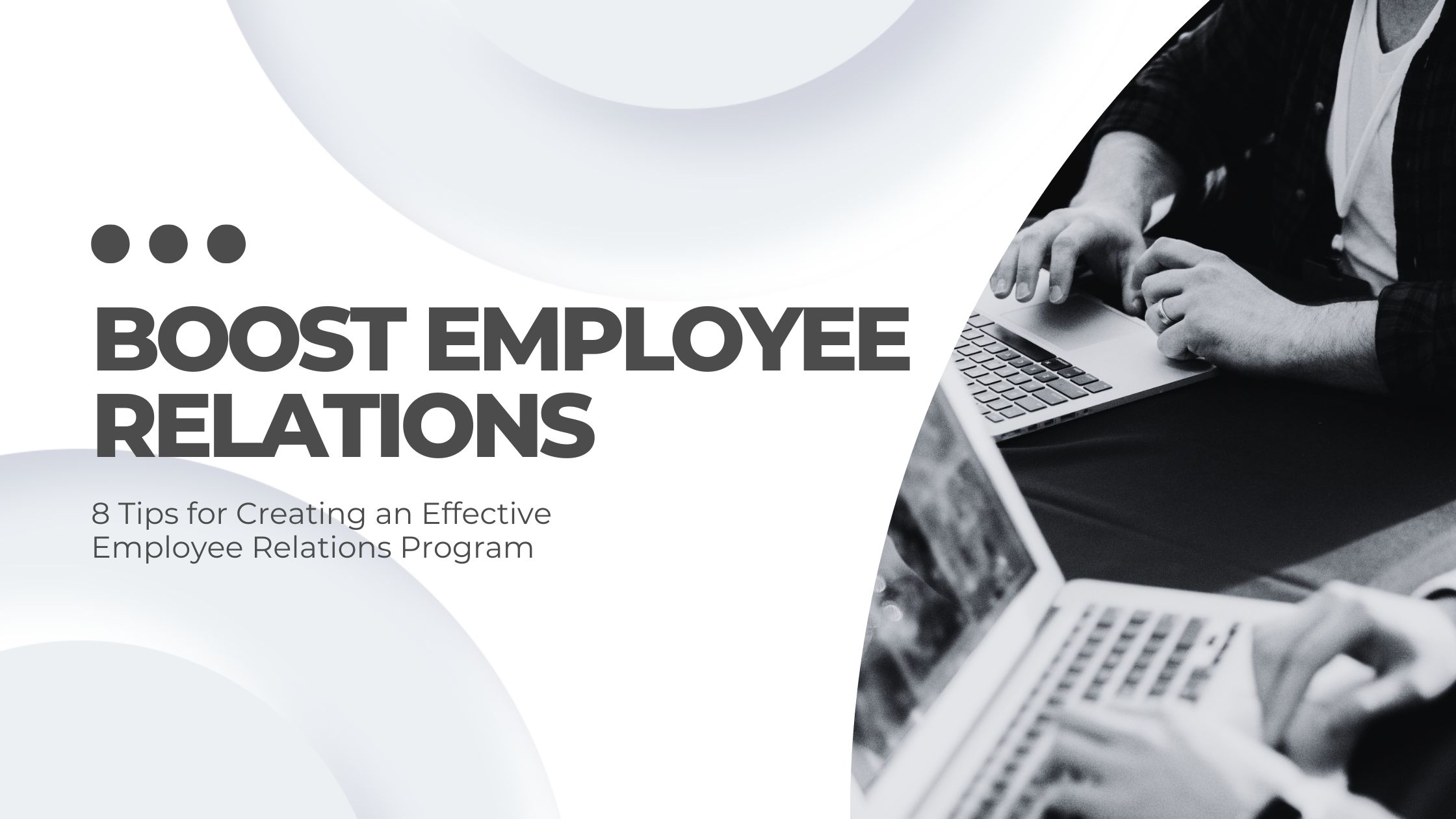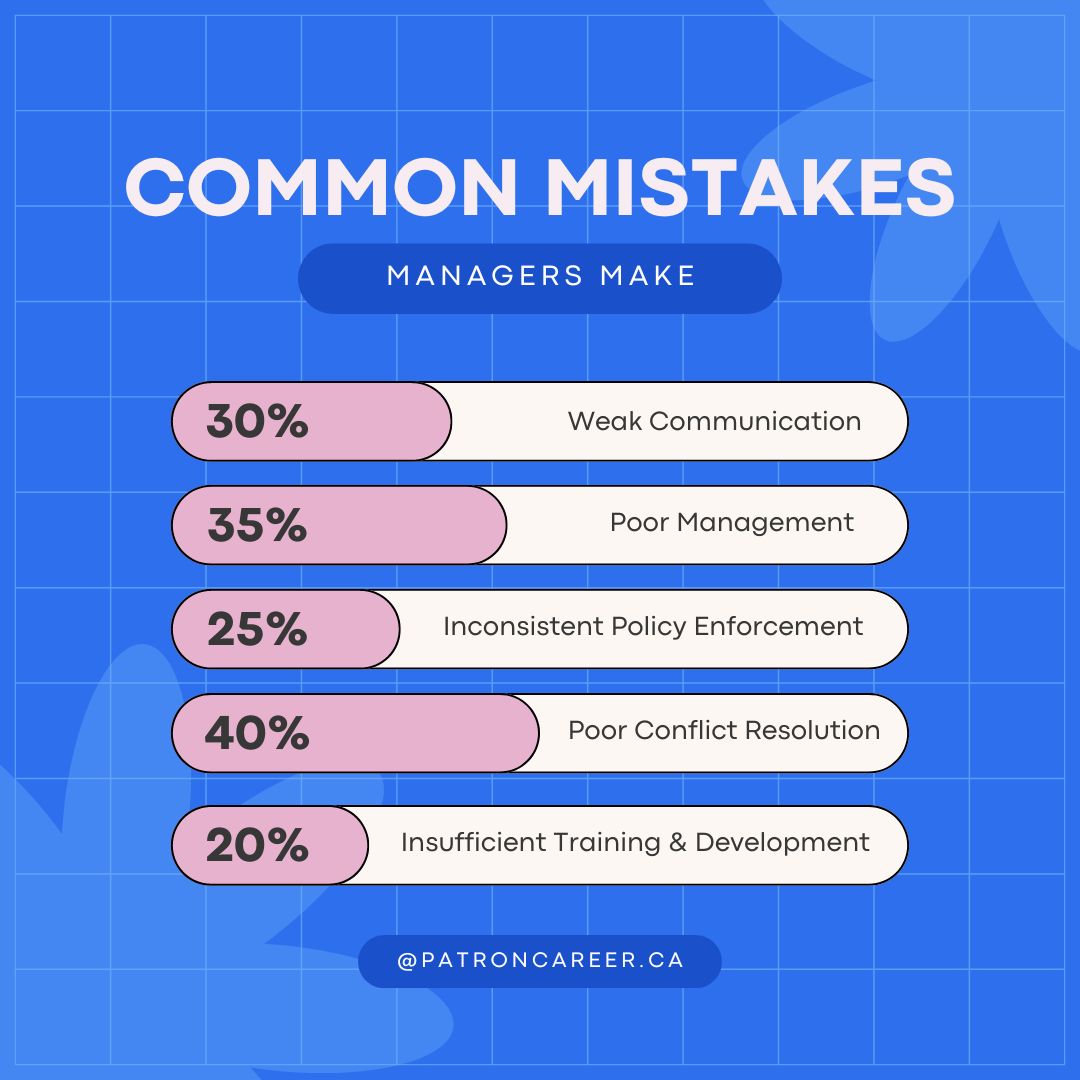
Employee Relations
3 June, 2024
Patron Career Staffing firmly believes in adopting a tailored approach to meet temporary and permanent recruitment needs. We safeguard the interest of our clients by finding such workers who are knowledgeable and reliable.
About UsNeed help? Make a Call
32 Dundas Street East Unit A, L5A1W2

Given the backdrop of increased turnover, many Canadian organizations have awakened to realize that employee relations are a crucial aspect of building a thriving workforce. Why? A robust employee relations program bourgeons a highly efficient workforce, reduced turnover and a positive working environment. Without employee relations, managing a workforce becomes a challenge. This program helps companies measure the overall work environment, and maintains healthy, cooperative relationships between employers and employees.
Read: Essential HR Guide to Building Strong Employee Relations
Here’s what to consider while creating an Employee Relations Program.
What are Employee Relations and Why is it Needed in an Organization?
Organizations tend to make efforts to effectively manage employer-employee relationships at work. This is known as employee relations. It encompasses addressing employee concerns, managing conflict, fostering communication, and ensuring a positive work environment. Effective employee relations programs are essential because they help in:

Let's get into the real deal of how to build a positive employee relations program in your organization.
8 Best Practices to Create a Successful Employee Relations Program
1. Establish Clear Communication Channels
Without open and honest communication, positive employee relations are a distant dream. Employees should be allowed and inspired to speak their minds and have a voice of their own. Build such a program that fosters a supportive work environment where employees feel heard, valued and comfortable in asking for help. Effective communication is the cornerstone of any successful employee relations program. Encourage regular feedback , hold open forums, and use various communication tools like newsletters, emails, and intranet platforms to keep everyone informed. Regular updates on company policies, changes, and achievements help maintain transparency and trust.
2. Develop Comprehensive Policies and Procedures
Maintain key HR policies to maintain and improve employee relations. With a strong framework with clear policies and procedures, employees are more likely to be motivated, engaged and committed to their work. Such policies should focus on non-discrimination and fair treatment of all employees. These policies should cover areas such as workplace conduct, grievance handling, performance management, and disciplinary actions. Make sure that these policies are easily accessible and regularly updated to reflect any legal or organizational changes. Training sessions can help ensure that employees understand these policies and procedures.
3. Foster a Positive Work Environment
A positive working environment is paramount for all employees. Promote teamwork and collaboration as teamwork makes the dream work. Bring together employees from all departments and focus on creating a culture of respect, inclusivity, and support. Recognize and celebrate diversity within the workforce, promote work-life balance, and provide opportunities for professional development. Implementing programs like flexible working hours, wellness initiatives, and team-building activities can significantly boost morale and engagement.
Read: Five Elements to Build a Strong Employee and Employer Relationship
4. Provide Training and Development Opportunities
Training and development opportunities are handy in uplifting employee morale, satisfaction and productivity. Listen to the needs of individual employees and create a training plan personalized for all of them. Invest in their growth and skill engagement because the ROI is usually very high. Offer workshops, seminars, online courses, and mentoring programs. When employees see that their growth is valued and supported, they are more likely to remain committed and motivated.
5. Implement Fair and Consistent Performance Management
Performance management is the art of shaping a team’s performance. It should be transparent, consistent, and fair. Develop a performance evaluation system that includes clear criteria, regular feedback, and opportunities for improvement. Encourage managers to provide constructive feedback and recognize achievements. Address underperformance with supportive measures such as additional training or mentoring rather than punitive actions.
Read: 2023 Performance Management Trends in Canada's Workforce
6. Address Conflicts Promptly and Effectively

Workplace conflicts arise often and are inevitable in any workplace. But, the manner of handling them makes a huge difference. Adopt a fair, unbiased and transparent approach with a clear process. Employees should be outspoken about any issues or concerns they feel during their tenure. The reporting mechanism of disputes and grievances should be simple and doable. Encourage employees to speak freely and honestly when conflicts arise and out of ill will and resentment. Train managers and HR personnel in conflict resolution techniques and ensure that employees know how to raise their concerns. Promptly addressing conflicts helps in maintaining a harmonious work environment and prevents escalation.
7. Encourage Employee Involvement and Participation
Happy employees tend to enjoy their work even more. At work, promoting their active involvement and participation is crucial for a positive employee relations program. Involve them in decision-making and other important concepts to give a sense of ownership and accountability. Create platforms where employees can share their ideas and suggestions, such as committees, suggestion boxes, or regular meetings. When employees feel that their input is valued and can make a difference, it enhances their engagement and loyalty to the organization.
8. Monitor and Evaluate the Program Regularly
Measuring the success of your employee relations program is highly important. Involve in regular monitoring and evaluation of the program. This allows for a checks and balances approach to ensure its effectiveness. Use surveys, feedback forms, and other assessment tools to gather insights from employees. Analyze this data to identify areas of improvement and make necessary adjustments.
Embrace Employee Relations Program for Success
Creating an effective employee relations program is not a one-size-fits-all approach, rather it requires the selection of strategies that best integrate with an organization’s goals, values and departmental policies. You can build a powerful employee relations program along the lines of these eight tips and watch your organization and its people prosper to a whole new level.
